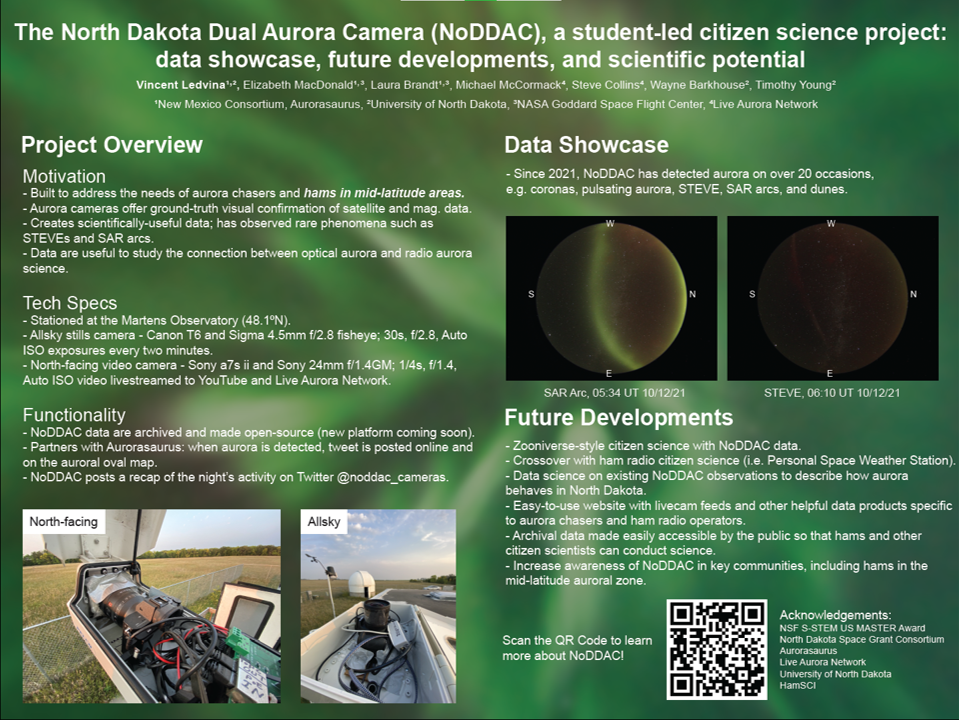| Title | The North Dakota Dual Aurora Camera (NoDDAC), A Student-led Citizen Science Project: Data Showcase, Future Developments, and Scientific Potential |
| Publication Type | Conference Proceedings |
| Year of Conference | 2022 |
| Authors | Ledvina, V, MacDonald, E, Brandt, L, McCormack, M, Collins, S, Barkhouse, W, Young, T |
| Conference Name | HamSCI Workshop 2022 |
| Date Published | 03/2022 |
| Publisher | HamSCI |
| Conference Location | Huntsville, AL |
| Abstract | The North Dakota Dual Aurora Camera (NoDDAC) is a student-led project in collaboration with the University of North Dakota (UND), Live Aurora Network, and Aurorasaurus. Aurora cameras provide ground-truth visual data to aurora chasers and scientists, but are sparse at midlatitudes. Deploying a light-sensitive video camera and allsky still camera in these areas provides a valuable resource to aurora-chasing communities, including ham radio operators in the auroral zone, and demonstrates scientific merit. For example, the analysis of rare phenomena benefits from observations at multiple locations. In addition, NoDDAC data can be correlated with radio and ionospheric propagation changes, as well as geomagnetic activity, to investigate the connection between optical aurora and radio science. This project is unique; utilizing dual cameras with COTS equipment, emphasizing open data as a responsive community resource, and promoting citizen science make it an accessible resource benefing multiple audiences. Since early 2021, NoDDAC has detected aurora on more than 20 occasions, as well as unusual events like overhead auroras, STEVEs, and noctilucent clouds. NoDDAC is stationed at Martens Observatory (48.1°N), which is operated by the UND Department of Physics and Astrophysics. Live Aurora Network housings weatherproof both cameras, and their proprietary IPTimelapse software uploads images to a web server for analysis. The north-facing camera records video, allowing Zooniverse-style citizen science for small auroral features. Live Aurora Network streams both cameras on their website and app. Ultimately, when aurora is detected IPTimelapse will post a clip of the display to @NODDAC_cameras on Twitter. Automated reports will be mapped on Aurorasaurus, alongside citizen scientist observations. Image data are archived according to open source and FAIR data principles. NoDDAC will also look for crossovers with projects such as the Personal Space Weather Station to provide additional ground-based measurements of the space environment. This presentation will reflect on the data captured with NoDDAC and outline a timeline for its future, and open the floor for collaborations with other citizen science efforts. |
| Refereed Designation | Non-Refereed |
| Full Text |

